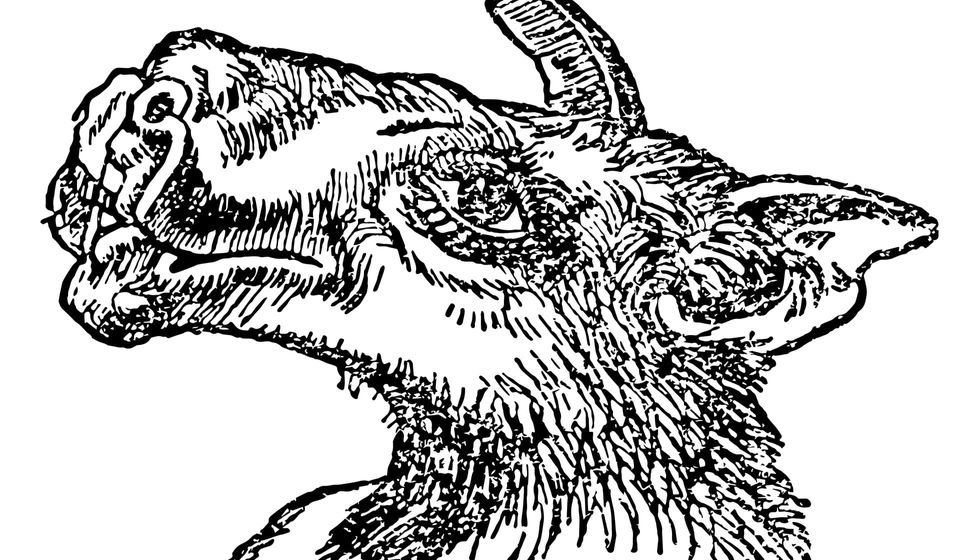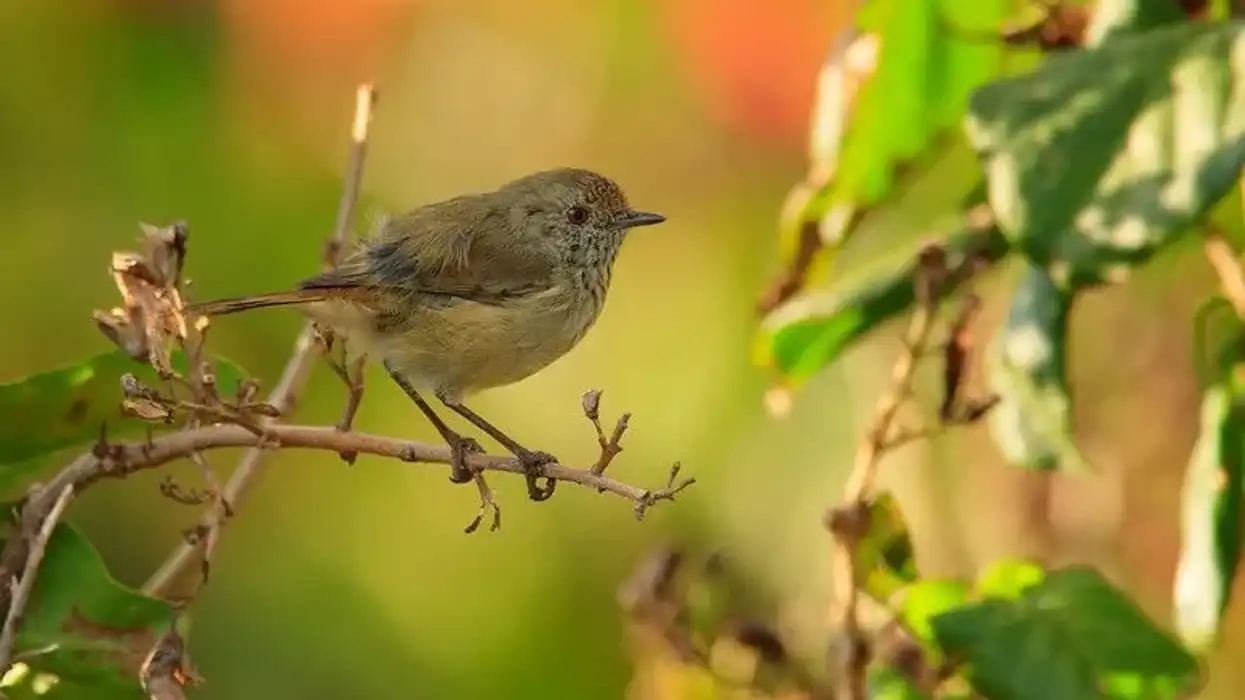Hammer-headed bats were kept in captivity at the Bronx Zoo of New York all the way back in the '80s, and are still seen at the Wrocław Zoo in Poland.
Also commonly called the hammer-headed fruit bat or the hammerhead bat, it has the scientific name Hypsignathus monstrosus.
The scientific name of this bat species was given to it, in all possibility, due to the appearance of the male. While the entire body of the male hammerhead fruit bats appears like any other species, its giant snout-like resonating chamber is its standout feature and thus makes it look quite scary.
At a wingspan that can go up to 3 ft (90 cm), this species is the largest bat species in all of Africa.
Hammer-headed fruit bats are often considered one of the prime nocturnal nuisances that plague the residents of equatorial Africa due to their extremely loud honks. This is not without good reason, as the male hammer-headed fruit bat (Hypsignathus monstrosus) uses its large resonating chamber on its mouth to amplify any sound it makes.
Additionally, males of this interesting bat species have important internal organs like the heart and the lungs literally making space to accommodate their massive larynx.
This unusual emphasis on being loud caused German zoologist Herbert Lang and his research partner, American ornithologist James Chapin to comment, "In no other mammal is everything so entirely subordinated to the organs of voice".
Read on for many more unbelievable facts about the hammerhead bat! Don't forget to check out our articles on Hoary bat facts and the Mexican free-tailed bat facts.
Hammer-Headed Bat Interesting Facts
What type of animal is a hammer-headed bat?
The hammerhead bat is a bat and quite an ugly-looking one at that.
What class of animal does a hammer-headed bat belong to?
The hammer-headed fruit bat is an animal belonging to the class Mammalia, which means its offspring drinks its mother milk that she produces using her mammary glands.
How many hammer-headed bats are there in the world?
While the exact population statistics of hammer-headed bats in the world is not known, it is presumably found in abundance across western and central Africa despite often being hunted as bushmeat.
This is due to the fact that its habitat is spread across a large range of geographical areas, and since it is not a common bat species to keep in captivity.
Where does a hammer-headed bat live?
The hammer-headed fruit bat (Hypsignathus monstrosus) is most often found in rainforests, just like Wombats, which... aren't really bats!
What is a hammer-headed bat's habitat?
Hammer-headed bats live in rainforests with a well-established source of water, such as in mangroves, and swamp or riverine rainforests. They can also call the area of intersection of grassland and rainforest their home.
The few records of them being found in the savannahs of Africa (alongside Wildebeest, a common sight there) are considered to be due to vagrants, and not because it is an alternate habitat for them. Hammer-headed bats (Hypsignathus monstrosus) are lowland species, meaning they always live around 5,900 ft (1,800 m) below sea level.
Who do hammer-headed bats live with?
The hammer-headed species of bat live in groups of a mix of males and females of its own species, unlike most other species of bat which practice sexual segregation. Rarely, roosts of 25 hammerhead bats have been documented, but the average size of a roost is not more than five males and females in total.
How long does a hammer-headed bat live?
In the wild, hammerhead bats have been documented to live for up to 30 years.
How do they reproduce?
This species of bat is widely regarded to be the only species to demonstrate lek mating behavior.
In this form of mating, a large group of males (in groups of 25-132 individuals) will occupy a region, usually a river bed in this case, and try to attract females using boast behavior such as honking and flapping their wings.
There are two sessions of mating each day, one in the morning, where the most copulation occurs, and another in the night, which is mostly for males to fight over a favorable spot in the lek.
Seeing as 6% of males, the successful males, account for 79% of all mating activity goes to show how important a good, central spot in the lek can be.
What is their conservation status?
The Hypsignathus monstrosus is listed as a species of Least Concern on the International Union for Conservation of Nature (IUCN) Red List of Threatened Species.
Hammer-Headed Bat Fun Facts
What do hammer-headed bats look like?
Hammerhead bats exhibit sexual dimorphism, meaning there are differences between males and females of the species that go beyond just the reproductive organs. Males are far larger in size than females and can weigh almost twice as much as a female.
The most marked difference between males and females of this species is by far the unusual-looking head in males, which features a large protrusion of the snout, lips, and chin to accommodate for a resonating chamber.
While females also possess a square head, their mouth resembles most other species of bat. Both males and females have a strip of white fur on their back from shoulder to shoulder, and white bases of the ears.

How cute are they?
Bats are not the cutest of animals, and hammerhead bats are no different. The protruding snout and lips seen in male hammerhead bats further reduce any chances of them being cute. To top it all off, they are also the largest bat in all of Africa, so you are more likely to find them intimidating than cute.
How do they communicate?
Just like other bats, hammerhead bats too use high-frequency chirps to communicate with others, and the sounds they produce are often outside the range of audibility for us humans. The few sounds that these bats produce that we can hear can sound similar to a screeching bird.
How big is a hammer-headed bat?
Adult hammer-headed bats can have a wingspan of up to 3 ft (90 cm), and at 10-12 in (25-30 cm), they are the largest bat in the continent of Africa. It is five times bigger than the red bat, and almost three times larger than the legendary Vampire bat.
We'll leave it to you to decide which one of these is the scariest, though!
How fast can a hammer-headed bat move?
The bat was recently found to be the fastest animal in the world, with the ability to fly at 100 mph (161 km/h). However, due to the large size of the hammerhead bat, this is not an achievable speed for it.
Instead, its maximum flight speed is more likely around the 50-60 mph (80-100 kph) range, which is definitely nothing to scoff at.
How much does a hammer-headed bat weigh?
A male hammer-headed fruit bat can weigh almost twice as much as the female, at 15 oz (420 g) to the females' 8 oz (230 g).
What are the male and female names of the species?
Both males, as well as females of this species, are referred to by the same name.
What would you call a baby hammer-headed bat?
A baby bat is called a pup, just like with dogs. Thus, a baby hammer-headed bat can be called a hammer-headed pup.
What do they eat?
The hammer-headed bat is a frugivorous animal, meaning its diet mostly consists of fruits. Figs are a major part of their diet, but they will also eat other African fruit such as mangoes, guavas, and bananas. Due to this, they can become a pesky crop pest for farmers on the continent.
Are they aggressive?
Unless they are agitated by the actions of humans around them, they are usually not aggressive. Males can exhibit aggressive behavior to one another when vying for spots in a lek.
Would they make a good pet?
No, they are not the most pleasing of animals to look at, and also are commonly affected by parasites like mites and fleas. They have received a lot of attention and research for being the possible natural host of the Ebola virus, but no evidence of this has been found so far.
Despite its offspring appearing cute to some, a bat is an animal to be left in the wild.
Did you know...
A male Hypsignathus monstrosus will not assist the female in the process of bringing up a pup after the breeding process is complete. Instead, the mother provides the pup with milk and later other food, protection, and grooms it till it is ready to live independently.
Meanwhile, the male can copulate several more times and advance the population of the species.
How many acres does the hammer-headed bat cover?
Males and females of this species cover different distances in search of food.
While the male is willing to travel longer distances, in the range of 20-30 acres to find more nutritious fruits and other food, the female instead prefers to travel lower distances, around 10-15 acres of the wild to look for more predictable and reliable sources of food.
What is the biggest bat in the world?
The largest bat in the world is the giant golden-crowned flying fox or the golden-capped fruit bat.
Learn more about some other mammals from our ghost bat facts and megabat facts pages.
You can even occupy yourself at home by drawing one on our free printable Hammer headed bat coloring pages.










